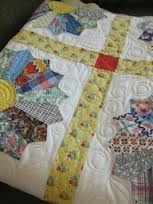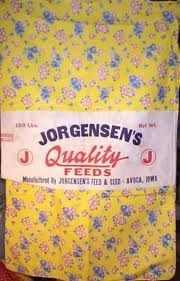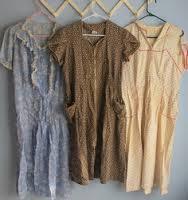The Quilts Featured in Carolina Reckoning—Feedsack Quilts
 After the Civil War, cotton sacks replaced barrels as food containers. Women discovered these fabric bags could be used for quilts and clothing needs. The product logos were printed on the fabric. These circular advertisers harkened back to the day when marketing had to fit on a circular barrelhead.
After the Civil War, cotton sacks replaced barrels as food containers. Women discovered these fabric bags could be used for quilts and clothing needs. The product logos were printed on the fabric. These circular advertisers harkened back to the day when marketing had to fit on a circular barrelhead.
 For women to use the feedsack fabric, they first had to remove these labels. Various methods included soaking the print in kerosene or rubbing it with unsalted lard. Afterward, the fabric was washed in lye soap. By 1925, savvy businesses began to see the marketing potential of the feedsack fabrics and pasted company logos on to the fabrics resulting in easier removal.
For women to use the feedsack fabric, they first had to remove these labels. Various methods included soaking the print in kerosene or rubbing it with unsalted lard. Afterward, the fabric was washed in lye soap. By 1925, savvy businesses began to see the marketing potential of the feedsack fabrics and pasted company logos on to the fabrics resulting in easier removal.
The 1930s saw heated competition between companies for the most attractive and sought after prints. Artists were hired to design the prints. This marketing ploy kicked in as women scoured store shelves, selecting sugar, rice, beans, cornmeal, animal feed and fertilizer based on the fabric stash they wished to acquire.
 Women, being women, traded feedsacks with neighbors in order to match fabrics for projects. The feedsack tradition continued through World War II as a means of showing patriotism and to conserve resources needed for the war effort. Newer synthetic fabrics created after the war resulted in the cessation of this marketing tool.
Women, being women, traded feedsacks with neighbors in order to match fabrics for projects. The feedsack tradition continued through World War II as a means of showing patriotism and to conserve resources needed for the war effort. Newer synthetic fabrics created after the war resulted in the cessation of this marketing tool.
How can you tell if it’s really feedsack fabric?
A line of holes is the best indicator, from the chainstitching that held the original sack together.
Anyone remember a dress or apron made from feedsack fabric?
Anyone want to share a photo of a feedsack quilt?
Send me a jpg of your feedsack creation—clothing or quilt—and I’ll post to blog readers.
For more info on Carolina Reckoning or to see behind-the-scene photos including quilts, visit http://pinterest.com/lisacoxcarter/carolina-reckoning/.





